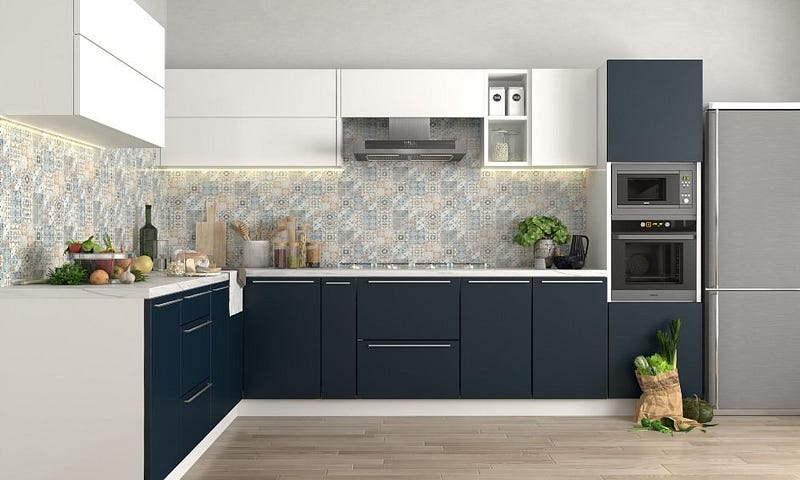Understanding the Difference Between Architecture and Interior Design
Architecture and interior design are two closely related yet distinct disciplines that play vital roles in the creation of functional, aesthetic, and sustainable built environments. While both contribute to shaping spaces we live and work in, their focus, approach, and outcomes are fundamentally different.

1. Core Focus and Scope
Architecture:
Architecture is the art and science of designing and constructing buildings and structures. It focuses on the exterior and structural aspects of a building, including site planning, spatial design, structural integrity, and compliance with building codes and regulations. Architects are responsible for designing the overall form, layout, and framework of buildings — from the foundation to the roof.
Key responsibilities of architects include:
- Site analysis and project planning
- Structural and spatial design
- Building envelope and material selection
- Engineering coordination (including MEP companies in Dubai)
- Legal and safety compliance
Interior Design:
Interior design, on the other hand, deals with the interior environment of a space. It focuses on creating functional and aesthetically pleasing interiors by managing elements such as lighting, color schemes, furniture layout, and spatial ergonomics. Interior designers work within the architectural framework but enhance how a space feels and functions on a day-to-day basis.
Key responsibilities of interior designers include:
- Space planning and layout optimization
- Material, color, and texture coordination
- Lighting and ambiance design
- Selection of furniture and fixtures
- Functional zoning based on usage (e.g., dining, working, relaxing)
2. Design Process and Approach
While both disciplines involve creative processes, their workflows differ.
Architects typically:
- Begin with site analysis and client needs
- Develop schematic designs and structural plans
- Coordinate with engineers (structural, mechanical, electrical)
- Obtain permits and supervise construction
Interior designers typically:
- Analyze the client’s lifestyle or brand identity
- Propose mood boards and space concepts
- Plan furniture, lighting, and decorative elements
- Collaborate with fit-out specialists for execution
For example, in home interior fit-out, interior designers focus on making bedrooms, living rooms, and kitchens practical and stylish, while architects determine how those spaces are integrated into the structural shell of the home.
3. Application in Various Environments
Interior design and architecture often intersect across different sectors. Each setting brings unique requirements that highlight their respective strengths.
In residential projects:
- Architects design the villa layout, elevation, and structural systems.
- Interior designers execute the home interior fit-out, ensuring the living space meets the family’s lifestyle and aesthetic needs.
In office spaces:
- Architecture manages space allocation, emergency exits, and daylight optimization.
- Interior designers handle the office interior fit-out, optimizing work zones, lighting, furniture, and acoustics for productivity.
In hospitality and F&B:
- Architects design the building footprint and guest flow.
- Interior designers execute the restaurant interior fit-out, creating ambiance and enhancing customer experience.
In retail environments:
- Architects define access points and customer flow.
- Interior designers manage the retail shop interior design, including brand expression and product display.
4. Technical Involvement and Regulations
Architecture involves heavy technical planning and compliance. Structural integrity, HVAC systems, and coordination with MEP companies in Dubai are all under the architect’s purview. On the other hand, interior designers engage with technical standards in terms of finishes, lighting levels, and ergonomic compliance but rely on the base structure provided by architects.
Both roles require collaboration to ensure the final space is safe, functional, and visually aligned with the client’s vision.
5. Project Collaboration and Execution
Architecture and interior design are most successful when both disciplines collaborate closely. This synergy is especially evident in projects such as luxury villas, where villa contractors in Dubai work alongside architects and interior designers to deliver a seamless experience.
For example:
- The architect may design a multi-level villa with sustainable elements and smart systems.
- The interior designer ensures the kitchen interior fit out includes ergonomic storage, task lighting, and modern finishes.
6. Examples of Leading Firms in the UAE
Several design firms in the UAE offer a blend of architectural and interior expertise, demonstrating the importance of an integrated approach:
- Blueprint Experts — Renowned for delivering customized solutions across residential, retail, and commercial projects, including kitchen, home, office, and restaurant fit-outs.
- Aedas Interiors — Specializes in large-scale developments with innovative architectural and interior integration.
- Al Tayer Group — Known for sophisticated interiors in luxury retail and hospitality sectors.
- Winteriors Decor LLC — Offers sustainable, functional interiors for corporate offices and public spaces.
- Kaizen Interiors — Delivers minimal yet functional design with a focus on client satisfaction and detail.
7. Conclusion
While architecture provides the framework and foundation of a structure, interior design brings the space to life. One defines the shell; the other refines the soul of the space. Understanding the distinction and importance of both roles ensures a balanced, successful design outcome.

By recognizing when to engage architectural services versus interior design expertise — or both — clients can ensure that every aspect of their space, from structural layout to surface finishes, is handled with precision and care. Whether it’s a villa, retail shop, office, or restaurant, the best results stem from harmonizing these two disciplines.


Comments
Post a Comment